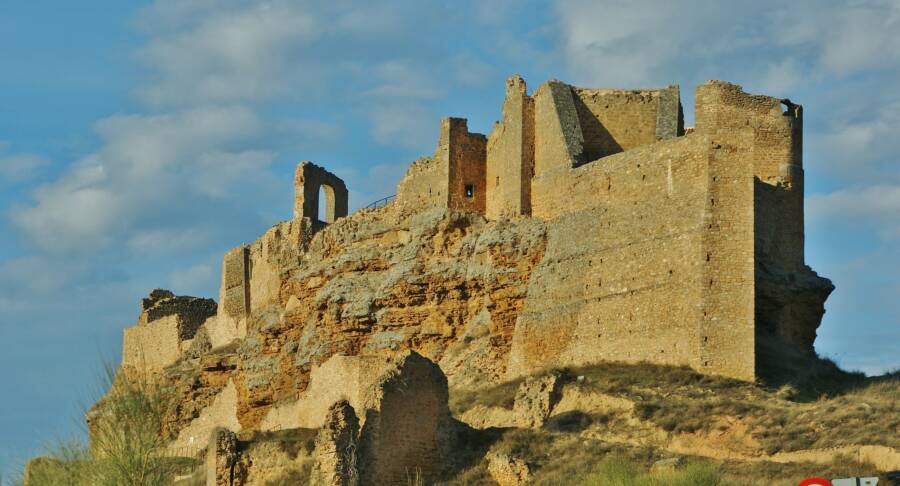Archaeologists excavating at Zorita de los Canes, a 9th-century hilltop castle in Guadalajara, Spain, recently unearthed the remains of a woman alongside an order of medieval warrior monks.

Universitat Rovira i Virgili Researchers were surprised to find a woman among the remains of medieval warrior monks, then they found that she had injuries suggesting that she also died in battle.
Throughout the Middle Ages, Christian and Islamic forces struggled for dominance in Spain during the so-called Reconquista. The conflict endured for centuries, resulted in countless battles across the region, and left innumerable people dead. Recently, researchers were examining a cemetery from this era at Spain’s Zorita de los Canes castle when they made a shocking discovery: a woman buried alongside two dozen warrior monks.
And from what the experts can tell, the woman was actually a warrior herself, one who lost her life in some long-forgotten battle.
The Woman Buried Among Medieval Warrior Monks In Spain
According to a statement from the Universitat Rovira i Virgili (URV) — which partnered with the Max Planck Institute — researchers discovered the woman warrior as they studied the remains of 25 people buried at Zorita de los Canes castle in Guadalajara, Spain.
The remains had been buried at a cemetery on the castle grounds between the 12th and 15th centuries, a period of intense conflict between Christian and Islamic forces. According to a new study published in Scientific Reports, 23 out of the 25 “showed marks compatible with violent death.” And one out of the 25, to the surprise of the researchers, was a woman (while the other was an infant, which was not the child of the woman).

AdriPozuelo/Wikimedia CommonsThe ruins of Zorita de los Canes castle, which was conquered by both Islamic and Christian forces at various points during the Middle Ages.
Researchers were able to determine her sex by studying the morphology of the facial bones and the pelvis which, in this case, left “little room for error.” But though it’s not uncommon to find women buried alongside monks, there was something unusual about her remains.
“Usually, there are some women together with monks,” URV researcher Carme Rissech told All That’s Interesting in an email.” This is not rare and they usually are housemaids. However, the women of this study, she does not display physical activity markers of a housemaid.”
Like the other individuals buried at the site, who had “puncture wounds and blunt force injuries… on the parts of the body that were most vulnerable to and unprotected from the weapons of the time,” the woman also had injuries that suggested she’d died during a violent battle.
“She may have died in a manner very similar to that of male knights, and it is likely that she was wearing some kind of armour or chain mail,” Rissech noted in the statement.
So who was the woman buried at Zorita de los Canes castle?
The Mystery Of The Woman Buried At Zorita De Los Canes

Wikimedia CommonsZorita de los Canes castle in Guadalajara, Spain, where the remains of the medieval warrior monks were unearthed.
According to the university statement, “we should picture [the woman] as a warrior of about forty years of age, just under five feet tall, neither stocky nor slender and skilful with a sword.” But many questions about her still remain.
It’s possible that she belonged to a religious order called the Order of Calatrava, which served a similar purpose to the Knights Templar. Zorita de los Canes castle had been given to the Order of Calatrava in the mid 12th-century by Alfonso VIII of Castile, who tasked them with defending the border. (The fortress was built by emir Mohammed I of Cordova in 852).
Researchers found that “the knights of the order followed a diet typical of medieval high society, with a considerable intake of animal protein and marine fish, in an area far from the coast.” The woman, however, consumed far less protein which could “indicate lower status in the social group.”

Dra. Carme Rissech, Professora Lectora d’Anatomia Humana i Embriologia. Departament Ciències Mèdiques Bàsiques, Universitat Rovira i VirgiliThe skull of the presumed medieval warrior woman, showing the harsh trauma of battle.
Because of this, some have theorized that the woman was perhaps not a warrior, but a servant who was called up to defend the castle in a moment of need. But though the woman’s bones don’t have the telltale marks of someone who performed physical labor as a servant, they do show marks found among people who train with a sword.
“I think she can be a warrior because of the lesions which she displays,” Rissech further explained to All That’s Interesting. “They are similar to that of the males and they seem to be due to an active battle. In addition, she does not have physical activity markers of working in a house. She has indications of frequent prono-supination. This could indicate the use of a sword.”
Rissech added: “We think she is from 13th century like the male warriors. We have the intention to deepen in her analysis.”
After reading about the medieval woman warrior discovered in Spain, look through these astounding stories of some of history’s fiercest woman warriors. Then, discover the story of Shieldmaidens, the fearsome female Viking warriors.





